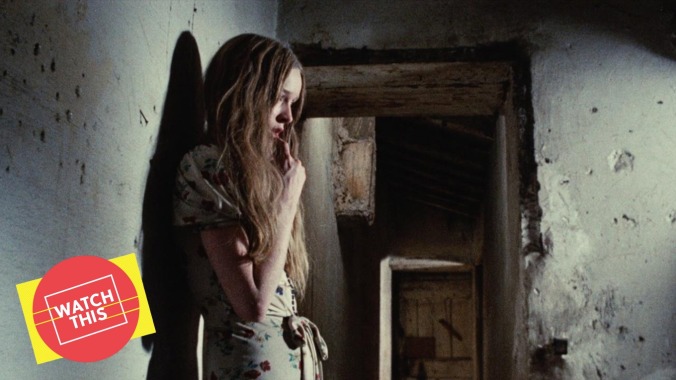Look past Dario Argento to discover one of the most luridly stylish giallos

Watch This offers movie recommendations inspired by new releases, premieres, current events, or occasionally just our own inscrutable whims. This week: With the Denzel Washington thriller The Little Things hitting theaters and HBO Max, we’re looking back at other movies about detectives hunting serial killers.
What Have You Done To Solange? (1972)
Between the simplifying force of history and the way the human brain processes information, most artistic movements end up getting boiled down to one or two big names. Your average Jeopardy! watcher, for instance, can get by on knowing what grunge rock is and that it was performed by Nirvana and Pearl Jam. For the oft-homaged breed of lurid Italian slasher pictures known as giallo, Dario Argento is the clear Kurt Cobain, with Mario Bava or maybe Lucio Fulci as the equivalent Eddie Vedder. Only once curious audiences start looking into the deep cuts will they find Massimo Dallamano, who graduated from being Sergio Leone’s cinematographer on the first two installments of his Dollars trilogy to become an accomplished and varied genre filmmaker in his own right during the ’60s and ’70s. Perhaps because Dallamano covered so much ground—a spaghetti Western, an opulent Dorian Gray adaptation, an erotic chamber piece, the poliziottesco crime flick memorably titled Super Bitch—his name hasn’t been quite so synonymous with giallo. But he’s still responsible for one of its most stylish, affecting, and inventively lecherous specimens.
What Have You Done To Solange? follows the tried-and-true template of a murder falling into the lap of a handsome guy with an interesting job, which forces him to play amateur sleuth in order to clear his name. Our man is professor Henry Rosseni (Fabio Testi, resplendent in a tightly manicured beard), a ladykiller in what he hopes to prove is a non-literal capacity. He can’t be the one who stabbed that blushing student in the genitals, he insists after witnessing the incident, because he was nearby getting it on with a different student at the time. When she turns up mutilated as well, he has no choice but to come clean to his “frigid” wife (Karin Baal), the simplest of the film’s many conflicts between sexual urges and the fallout of violence. That intersection grows more complicated once Henry tracks the trail of bodies to a clandestine orgy cult well-stocked with nubile coeds, and the back-alley abortionist servicing the members who need it.
